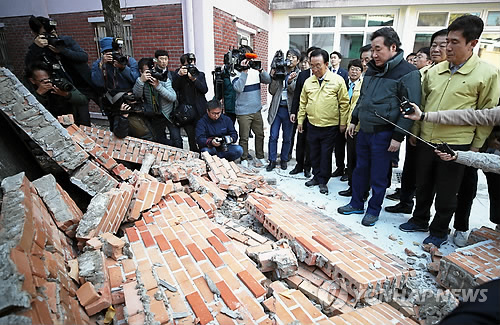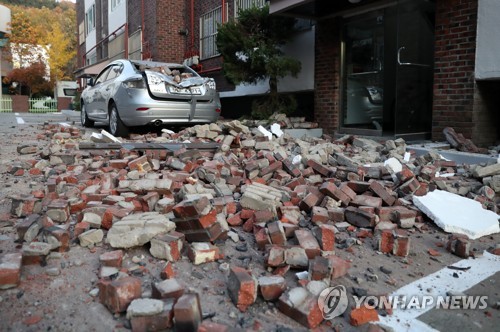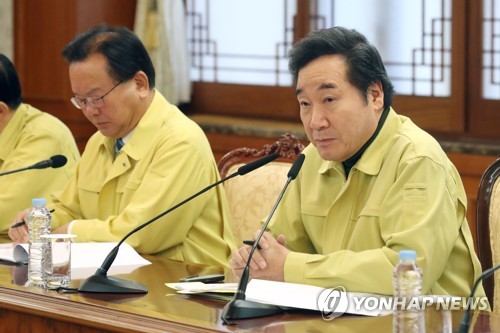The government will provide about 4 billion won (US$3.6 million) in special grants Thursday for recovery efforts in the southeastern city of Pohang struck by the second-most-powerful earthquake on record to hit the country, Prime Minister Lee Nak-yon said.

Lee made the remark during a visit to the situation room in Pohang overseeing recovery efforts, adding that the government will also take steps to designate the city as a disaster zone entitled to greater state subsidies and support as damage from the quake has been snowballing.
"I don't know what words of comfort I should offer to citizens of Pohang who have gone through great trouble and are experiencing inconveniences and anxiety, especially those displaced who spent the night without sleep," Lee said.
Lee later visited the affected sites, such as a girls' high school and an apartment complex, to take a first-hand look at the damage. He also paid a visit to an indoor stadium being used as a shelter for displaced citizens.

The 5.4 magnitude earthquake left more than 1,000 buildings, homes and vehicles destroyed or damaged, at least 57 people injured and a total of 1,536 people displaced from their homes. It also forced a postponement of the annual college entrance exam, which had been scheduled for Thursday.
It was the second-strongest quake on record to hit South Korea after last year's magnitude 5.8 earthquake in the nearby city of Gyeongju. But actual damage was much greater in this week's quake than in last year's.
Earlier in the day, Lee presided over a meeting of related ministries and agencies.
"First of all, what's urgent is to recover from the damage and to ease the inconvenience of Pohang citizens," Lee said at the start of the meeting of 10 government agencies, including the interior ministry and the Korea Meteorological Administration.
Lee stressed that recovery efforts should be based on the actual situation on the ground and that the Pohang city government should lead those efforts while the provincial and central governments work together.
Lee also ordered nuclear power plant operators to be on alert in case of emergency as aftershocks continued. The nearby region is home to a few nuclear power reactors, but they are undamaged and functioning normally.

Meanwhile, a series of aftershocks continued in Pohang amid fears that more powerful ones could come.
A magnitude 3.6 quake occurred at 9:02 a.m. about 8 kilometers from the city's northern district office at a depth of 8 km. It followed eight smaller tremors that occurred overnight, including a magnitude 2.4 quake at 21 minutes past midnight.
These are considered to be aftershocks of Wednesday's main quake.
According to the Korea Meteorological Administration, a total of 41 aftershocks have since occurred. One of them was of a magnitude between 4.0 and 5.0; two between 3.0 and 4.0; and the 38 others between 2.0 and 3.0.

